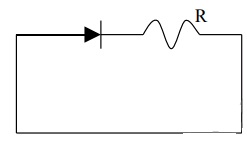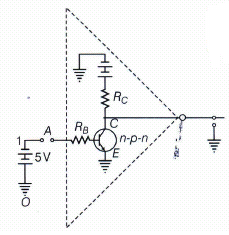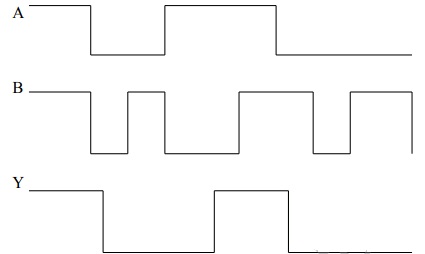CBSE 12th Standard Physics Subject Semiconductor Electronics Materials Devices And Simple Circuits HOT Questions 3 Mark Questions 2021
By QB365 on 27 May, 2021
QB365 Provides the HOT Question Papers for Class 12 Physics, and also provide the detail solution for each and every HOT Questions. HOT Questions will help to get more idea about question pattern in every exams and also will help to get more marks in Exams
QB365 - Question Bank Software
CBSE 12th Standard Physics Subject Semiconductor Electronics Materials Devices And Simple Circuits HOT Questions 3 Mark Questions 2021
12th Standard CBSE
-
Reg.No. :
Physics
-
The input resistance of a silicon transistor is \(665\Omega \). Its base current is changed by \(15\ \mu A\) which results in the change in collector current by 2 mA. This transistor is used as a common emitter amplifier with a load resistance of \(5 \ k\Omega \). Calculate
(a) current gain, \(\beta _{ ac }\) ;
(b) transconductance \(g_{ m }\) and
(c) voltage gain \(A_{ v }\) of the amplifier.(a) -
As we know that an n-type semiconductor has large number of electrons but it is still electrically neutral. Why?
(a) -
How would you set up a circuit to obtain NOT gate using a transistor?
(a) -
A circuit symbol of a logic gate and two input wave forms A and B are shown.
a) Name the logic gate
b) Give the output wave form
(a) -
The diode shown in the figure has a constant voltage drop of 0.5V at all currents and a maximum power rating of 100mW. What should be the value of resistance R connected in series, for maximum current.?
 (a)
(a)
*****************************************
CBSE 12th Standard Physics Subject Semiconductor Electronics Materials Devices And Simple Circuits HOT Questions 3 Mark Questions 2021 Answer Keys
-
(a) 133.3 (b) \(0.2\Omega ^{ -1 }\) (c) 1000
Here, \(R_{ i }=665\Omega , \ R_{ 0 }=5k\Omega =5\times 10^{ 3 } \ \Omega \)
(a) \(\beta _{ ac }=\frac { \Delta I_{ c } }{ \Delta I_{ b } } =\frac { 2mA }{ 15\mu A } =\frac { 2\times 10^{ -3 }A }{ 15\times 10^{ -6 }A } =133.3\)
(b) \(R_{ i }=\frac { \Delta V_{ BE } }{ \Delta I_{ b } } \) or \(\Delta V_{ BE }=R_{ i }\times \Delta I_{ b }\)
\(=665\times 15\times 10^{ -6 }V\)
\(g_{ m }=\frac { \Delta I_{ c } }{ \Delta V_{ BE } } =\frac { 2\times 10^{ -3 } }{ 665\times 15\times 10^{ -6 } } =0.2\Omega ^{ -1 }\)
\(A_{ V }=\beta _{ a.c. }\times \frac { R_{ 0 } }{ R_{ i } } =133.3\times \frac { 5\times 10^{ 3 } }{ 665 } =10^{ 3 }\) -
n-type semiconductor is obtained when pentavalent impurity added to Si or Ge. All these materials are electrically neutral, so n-type semiconductor is also neutral.
-
The NOT gate is a device which has only one input and one output i.e. \(\bar { A } \)= Y means Y equals NOT A.
This gate cannot be realised by using diodes. However, it can be realised by making the use of a transistor. This can be seen in the figure given below:A Y 0 1 1 0 
Here, the base B of the transistor is connected to the input A through a resistance RB and the emitter E is earthed. The collector is connected to 5 V battery. The output Y is the voltage at C with respect to the earth.
The resistors, RB and RC are so chosen that, if emitter-base junction is unbiased, the transistor is in cut-off mode and if emitter-base junction is forward biased by 5 V, the transistor is in saturation state. -
This is AND logic gate Output wave form

-
e.m.f of the source , E = 1.5
Voltage drop across the diode , Vd = 0.5 V
Maximum power rating of the diode
I = (P / Vd)
I = 0.2A
Potential drop across resistance R
V = E - Vd
= 1 V
R = V/1 = 1/0.2 = 5 \(\Omega \)






































